A Study Suggesting That Neolithic Sacrifice Victims Were Killed With The Same Technique The Italian Mafia Uses Today
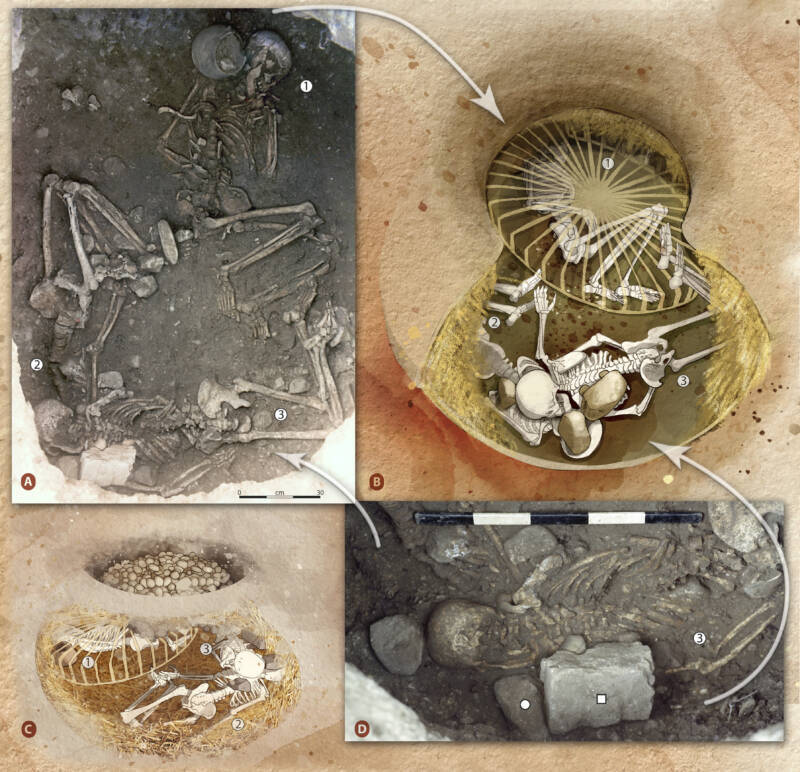
Ludes et al./Science AdvancesThe human remains found in France, which appeared to buried in an unusual fashion.
While examining a Neolithic burial pit in France’s Rhône Valley in 1984, biological anthropologist Eric Crubézy noticed something unusual: two women lying on top of each other with their legs pulled up behind them. Then, 40 years later, Crubézy read about an Italian Mafia torture tactic called incaprettamento — and realized that it looked like the bodies in the Rhône Valley graves.
During incaprettamento, someone’s legs are pulled behind their back and tied to their neck. This causes them to slowly suffocate. And Crubézy suspects that incaprettamento was used as a Neolithic sacrifice technique.
After examining 15 Neolithic burial sites across Europe containing the remains of 20 people, Crubézy and others concluded that this sacrificial method was widespread. However, some scholars believe that there isn’t enough evidence to say these Neolithic remains are linked.
A Rare Copy Of The U.S. Constitution Found In A North Carolina Filing Cabinet

Brunk AuctionsOnly 100 such copies were known to exist, and just eight of them have survived.
While preparing the historical Hayes Farm in Edenton, North Carolina, for transformation into a public historical site, conservators happened to open up an old filing cabinet. And, inside, they found a rare copy of the U.S. Constitution from 1787.
Though it’s unclear how the document ended up forgotten in the filing cabinet, historians have a pretty good idea of how it got to Hayes Farm. The property was once owned by Samuel Johnston, the governor of North Carolina between 1787 and 1789. After the Constitution was drafted in Philadelphia, it was sent to the Confederation Congress in New York City and then distributed to the states for ratification.
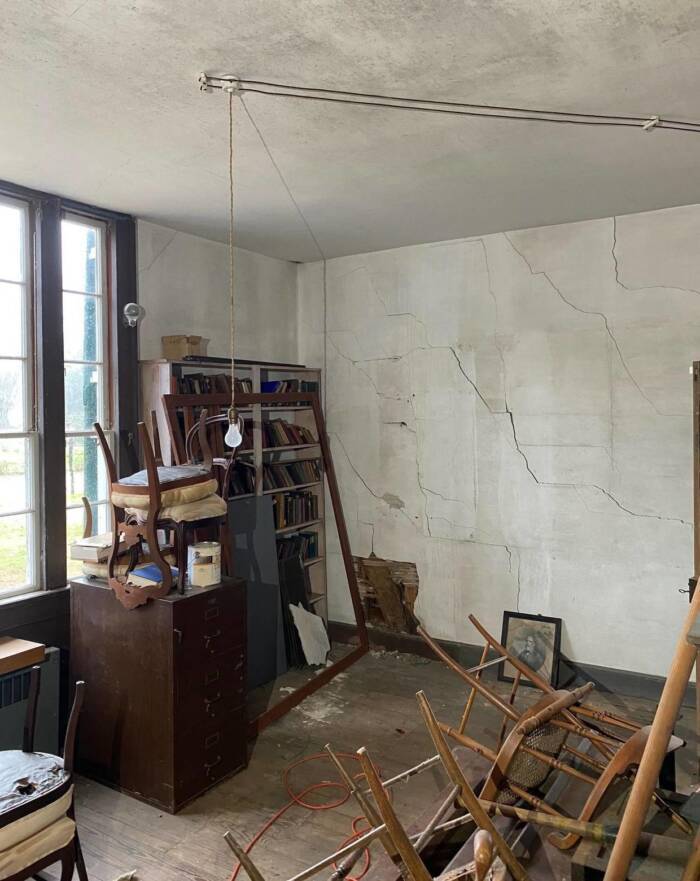
Brunk AuctionsThe filing cabinet where the Constitution was found.
This copy of the Constitution — one of just eight known to exist today — later sold for $9 million at auction.
The Surprise Discovery Of A Neolithic Longhouse In Poland
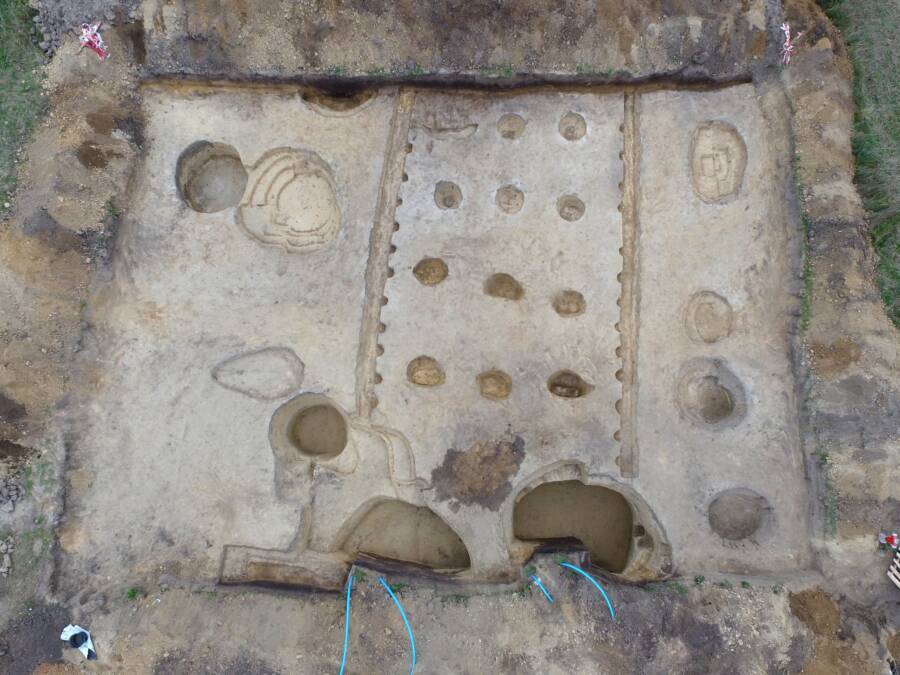
M. Bajka/Provincial Office for the Protection of MonumentsThe remains of the Neolithic longhouse discovered in Poland.
While investigating a settlement in Sandomierz-Mokoszyn, Poland, from 3500 B.C.E., archaeologists stumbled upon something even older: a longhouse built by the Linear Pottery culture between 5300 and 4900 B.C.E.
The longhouse, some 1,500 years older than the artifacts left by the later civilization, was once 20 feet wide and more than 65 feet in length. It was constructed by ancient farmers using a “post-and-beam technique” with walls made from material gathered from nearby clay pits.
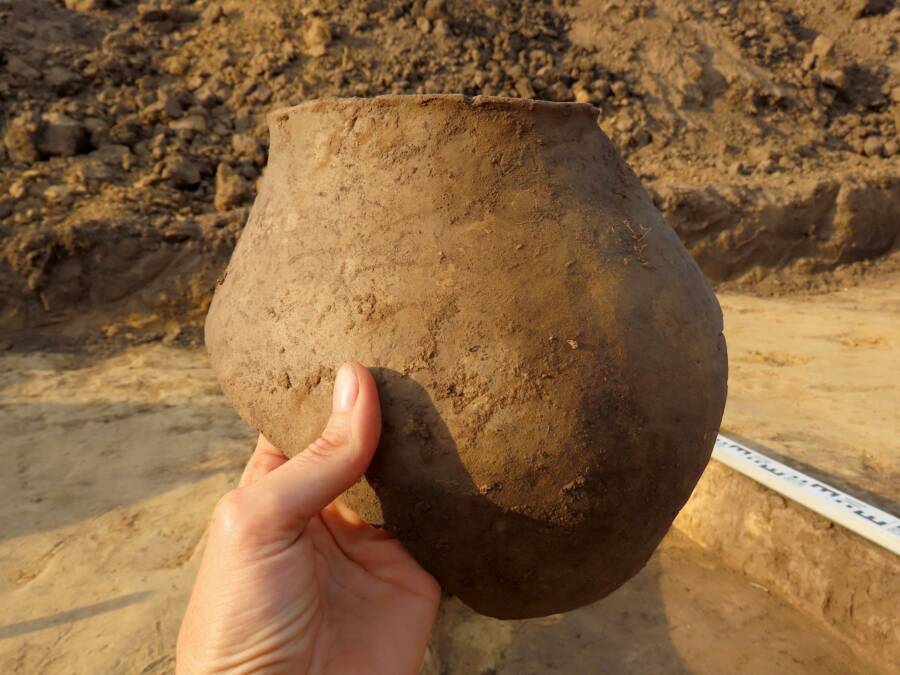
M. Bajka/Provincial Office for the Protection of MonumentsSome of the pottery that was found at the site.
Thrillingly, archaeologists also found a number of artifacts from the Linear Pottery culture near the longhouse. These included flint tools and objects made from volcanic glass. Researchers are looking forward to analyzing the objects to learn more about the people who made them.
Digging Up 2,7000-Year-Old Bronze Shields At A Turkish Castle
Thousands of years ago, Ayanis Castle in Türkiye was destroyed by an earthquake. This year, archaeologists excavating the ancient site stumbled upon something extraordinary in the rubble: three bronze shields and a helmet.
Though the shields were found nearly 20 feet beneath the ground, they were in remarkably good condition. According to local Turkish media, they had only a few “minor fractures,” which can hopefully be smoothed out during restoration efforts.
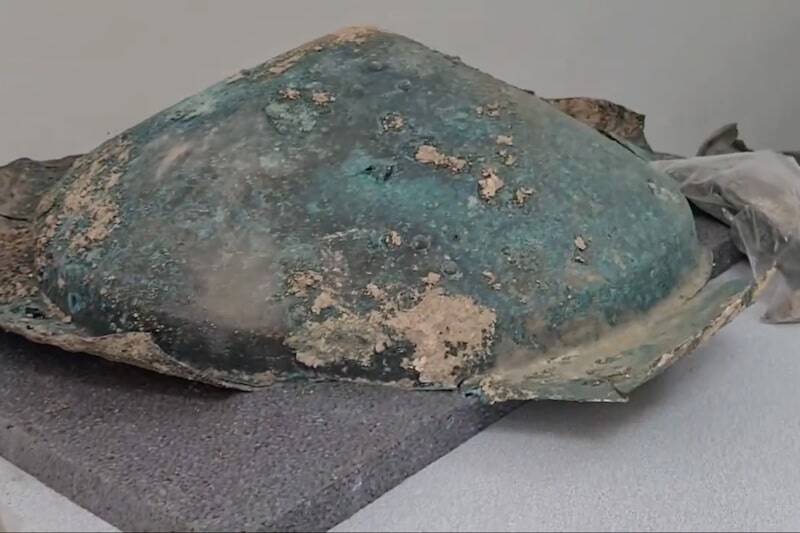
Republic of Türkiye Ministry of Culture and TourismOne of the bronze shields found at Ayanis Castle.
The castle was the last major fort constructed during the Urartu Kingdom, which began in the ninth century B.C.E and began to decline between roughly 640 B.C.E and 590 B.C.E. The bronze shields and helmet were found in what was once a ceremonial room in the castle and are decorated with dedications to Haldi, the main god of the Urartian people.
“These shields likely belonged to the royal family or an elite warrior group,” Mehmet Işıklı of the Atatürk University Archaeology Department, who has led the 36-year excavation of the site, remarked, “as Urartians were known to gift such items to nobility.”
The Sprawling Collection Of Tombs Underneath A Chinese Zoo
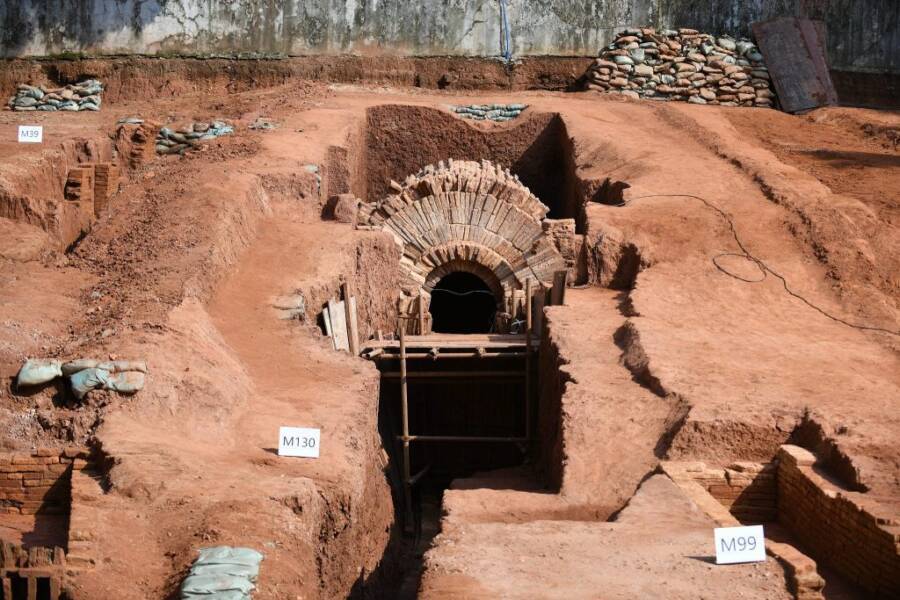
China News ServiceAn elevated tomb entrance at the zoo.
In 1956, the construction of a zoo in China’s Guangdong Province revealed the presence of hundreds of ancient tombs spanning thousands of years. Now, recent excavations have revealed even more tombs in Guangdong.
Excavations earlier this year revealed the presence of 148 more tombs as well as nearly 200 artifacts. Of the tombs, the oldest come from the Han Dynasty (206 B.C.E. to 220 C.E.) and the most recent date to the years following the founding of the People’s Republic of China in 1949. Eight tombs stem from the Jin and Southern Dynasties (265 C.E. to 589 C.E.), 15 from the Tang Dynasty (618 C.E. to 907 C.E.), 121 from the Ming and Qing dynasties (1368 to 1911), and 48 from the founding period of the People’s Republic of China.
Both the tombs and the artifacts found at the site paint a fascinating picture of life in China over more than 2,000 years. That’s why the tombs at the zoo are one of the most exciting history stories of 2024.
However, as the other stories show, 2024 was a great year for history all around. From bog butter to modern-day Egyptian beer to the U.S. constitution, it’s been a spectacular year for history — which doesn’t just happen in the past.
After looking through the top history news stories of 2024, learn some of the world’s most incredible history facts. Or, read about these fascinating historical figures who the world somehow forgot.





